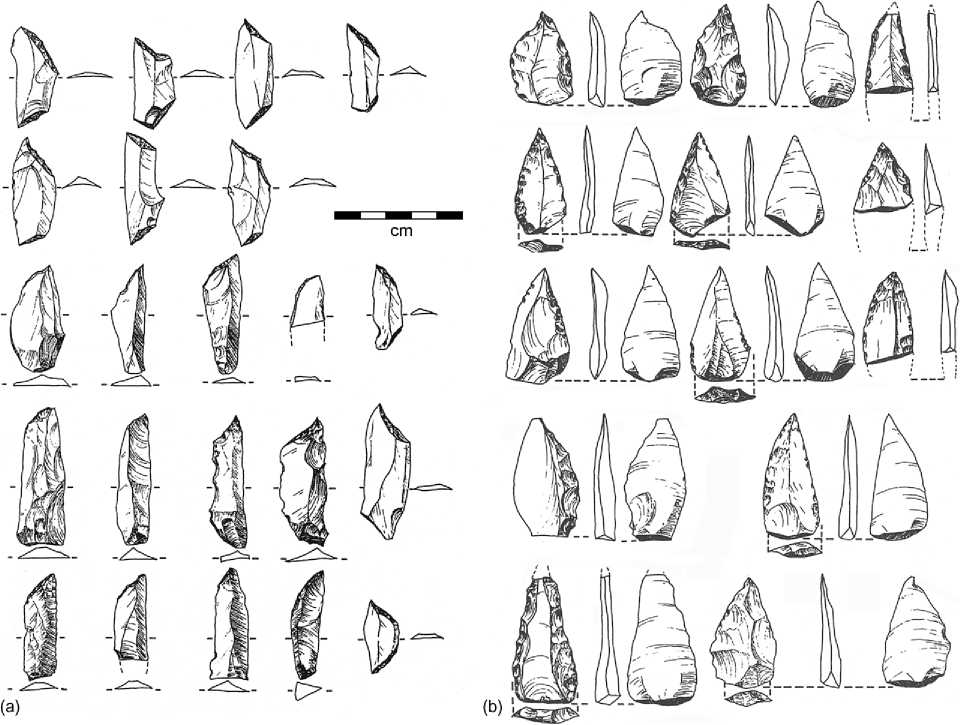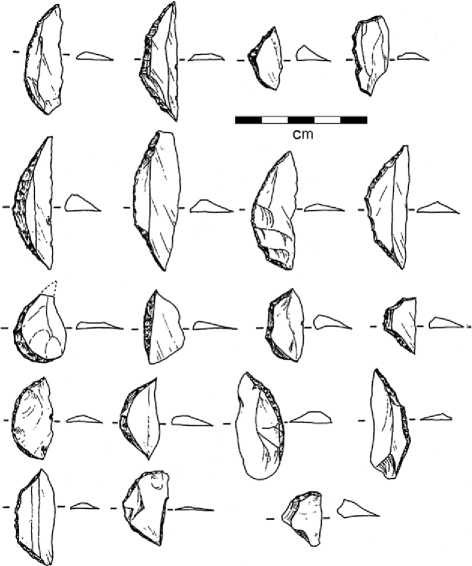Excavations in a rock shelter in Howison’s Poort (misspelt Howieson’s in the archaeological literature) revealed the presence of artifacts of both MSA and LSA character (Figures 6 and 7) and the whole artifact assemblage was named the Howieson’s Poort industry.
Radiocarbon dating of charcoal from excavations at the Howieson’s Poort type-site in 1965 (Figure 8) indicated that the artifacts had accumulated between 23 000 and 10 500 years ago (the calibrated dates are here rounded to the nearest 500 years). These dates were initially considered too young, since artifact

Figure 6 Artifacts of mixed MSA/LSA character from the Howieson’s Poort type-site: (a), obliquely backed blades; (b) retouched unifacial points. Reproduced from Deacon J (1995) An unsolved mystery at the Howieson’s Poort name site. South African Archaeological Bulletin 50: 110-120, by permission of the South African Archaeological Society.

Figure 7 Segments, such as occur both ‘‘in a restricted time slot in the MSA.. .and in the middle Holocene during the LSA’’ (Deacon, 1995): Howieson’s Poort type-site. They were probably mounted onto handles to form cutting tools. Reproduced from Deacon J (1995) An unsolved mystery at the Howieson’s Poort name site. South African Archaeological Bulletin 50: 110-120, by permission of the South African Archaeological Society.
Assemblages of similar character at Klasies River Mouth and elsewhere in Africa are thought to center on 70 000 year BP.
Geomorphological examination of fluvial sediments in Howieson’s Poort, supported by radiocarbon dating, has shown that flood plain deposition began on the floor of the Poort around 10 750 year BP, as fluvial and associated processes reworked sediments from the valley sides in the Early Holocene. This time period was apparently moister than the preceding Late Glacial and Bottelnek Stadial. The sediments at the Howieson’s Poort type-site have not been reworked into the valley floor deposits, presumably due to their favored location within the rock shelter. The stratigraphic layer within which the artifacts occur (Figure 8, layer 4) is the thickest unit at that site and includes roof spalls such as might have taken place under cold and frosty conditions during the Bottelnek Stadial. There is no geomorphological reason to doubt the radiocarbon dates from the archaeological type-site. The Howieson’s Poort industry, at least at the type-site, may be much younger than was previously believed and possibly form part of the LSA rather than the MSA.




 World History
World History









